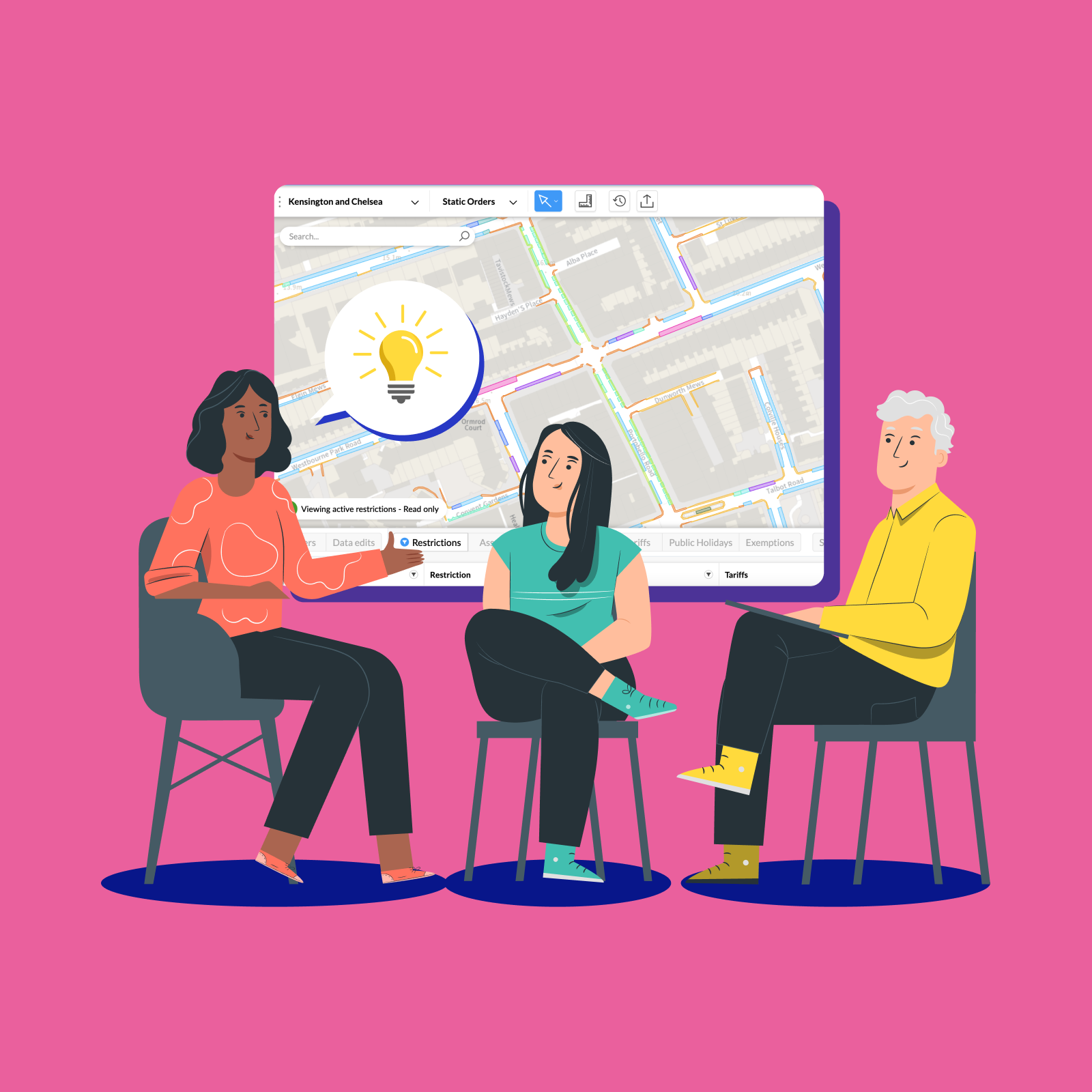The need to repurpose parking and the kerbside space
London’s streets are under increasing pressure as the city’s population grows and transport habits change. One factor is the movement of goods vehicles, which has exploded in the capital in recent years and has increased further in some locations as a result of the greater demand for home delivery generated by Covid-19. Online grocery delivery for example, grew by 25.5% in the first half of 2020, far greater the projected 8.5%.
At the same time, there is a growing focus on reducing congestion, emissions and air pollution. The Mayor of London has set a target that 80% of all journeys be by public transport, walking or cycling by 2041, a figure that is currently at 63%. That means cutting car journeys by three million a day and initiatives such as the deployment of funding from the DfT to accelerate Pedestrian and Cycling routes across local authorities help this. These changes are driving different demands on our kerbside by incentivising active modes and promoting access, but is kerbside ready?! Is it digitised?! And what will utilisation look like when we get there while maintaining revenues for cities.
To help achieve these goals, parking and kerbside access policies are increasingly becoming a political tool to prevent reliance on individual cars, and to repurpose parking and kerbside space. A complex issue however, given that local authorities need to generate revenue to fund local infrastructure (Lighting and EV charging) and the fierce entitlement authorities meet from user groups of different and often conflicting needs, the path to success is not clear. Kerbside is a complex asset, as the graphic below highlights. In any given period it must support multiple use cases and often due to its static nature struggles to support use cases as demand varies throughout the day. Through Covid for example, the surge in home delivery has been met with little provision for extra loading bays with councils preferring to suspend parking rather than adjust the type of kerbside access. The result has been a dramatic decline in local government parking revenues.
Land provision
One of the observations in our report with Centre for London is the heavy provision for residents parking. As readers can see in the report these high value bays are often clogged by low value, long term permits, and increasingly long stay resident cars which don’t move regularly. Westminster as a dense urban area is recognising reduced parking revenues while some outer London areas are recognising an upsurge in demand. Outer boroughs are experiencing 6 car households as people stay in the family home for longer with mature working adults needing different access needs. The car still represents access to many, reducing the dependency on stretched or non existing public offerings, especially in outer london.

The opportunity
We believe there is a real opportunity to study kerbside utilisation in detail and consider new ways to monetise its provision of access, retain and grow revenues but also move away from an enforcement led approach. Covid-19 especially has shown how an explosion in home delivery demand has not enjoyed the benefit of free kerbside access, with residents looking for long term vehicle storage while delivery companies fight for access to fulfil their busiest period on record. In local authority revenue terms that means they are supporting the lowest revenue-making use case through a period when, if the kerb was open to market forces, they could enjoy a share of revenues associated with operations. The reality is LA’s are unable to open the kerbside to market forces, and that is not what we propose.

We propose a dynamic asset, where a % of the total land value is retained and protected for certain access types and a different % unlocked and free to operate in support of market forces. If congestion was high you might suspend single occupancy parking and reward car share or car clubs. If clean air was poor you may tighten emission restrictions entering that area and parking. Provision of dynamic bays, even just for part of the street, will go a long way to explore these approaches and deliver innovation for good in our cities.

Following on from this, and to fulfil utilisation, we recognise the complexity of each local authority’s particular needs, which often conflict and can lead to slower innovation. A borough must both create revenue, maintain access and negotiate all user group needs, creating huge pressure. It is our recommendation that the DfT and other central bodies consider an aggregate approach to kerbside management, focussing on utilisation and trip purpose, and not leaving an individual local authority to work alone. This could incentivise neighbouring authorities and parking teams to partner and share a common area objective. How for example might Ealing, Brent, The City of Westminster and Camden all link up their strategies to fulfil a West London objective on congestion? Put simply, private single occupancy driving and parking could be more expensive the more modal change points you pass.





